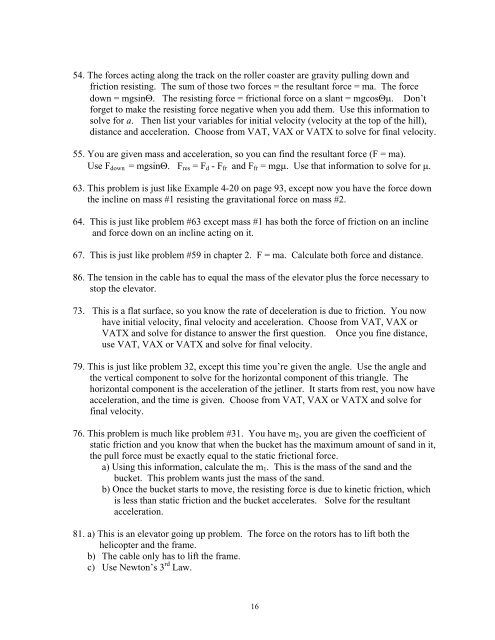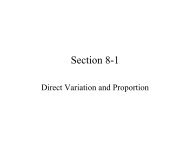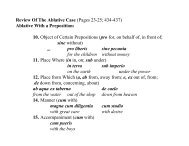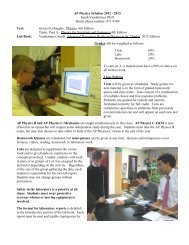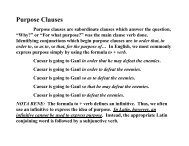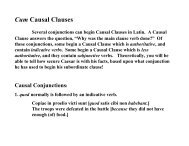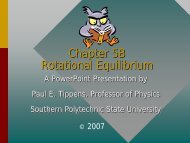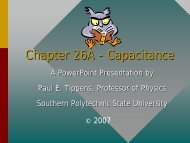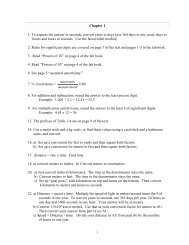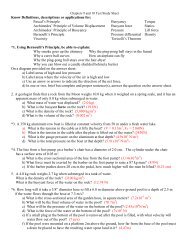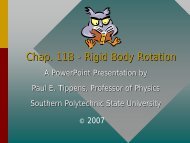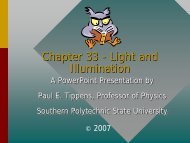Homework Hints Chapter 04.pdf
Homework Hints Chapter 04.pdf
Homework Hints Chapter 04.pdf
Create successful ePaper yourself
Turn your PDF publications into a flip-book with our unique Google optimized e-Paper software.
54. The forces acting along the track on the roller coaster are gravity pulling down andfriction resisting. The sum of those two forces = the resultant force = ma. The forcedown = mgsinΘ. The resisting force = frictional force on a slant = mgcosΘμ. Don’tforget to make the resisting force negative when you add them. Use this information tosolve for a. Then list your variables for initial velocity (velocity at the top of the hill),distance and acceleration. Choose from VAT, VAX or VATX to solve for final velocity.55. You are given mass and acceleration, so you can find the resultant force (F = ma).Use F down = mgsinΘ. F res = F d - F fr and F fr = mgμ. Use that information to solve for μ.63. This problem is just like Example 4-20 on page 93, except now you have the force downthe incline on mass #1 resisting the gravitational force on mass #2.64. This is just like problem #63 except mass #1 has both the force of friction on an inclineand force down on an incline acting on it.67. This is just like problem #59 in chapter 2. F = ma. Calculate both force and distance.86. The tension in the cable has to equal the mass of the elevator plus the force necessary tostop the elevator.73. This is a flat surface, so you know the rate of deceleration is due to friction. You nowhave initial velocity, final velocity and acceleration. Choose from VAT, VAX orVATX and solve for distance to answer the first question. Once you fine distance,use VAT, VAX or VATX and solve for final velocity.79. This is just like problem 32, except this time you’re given the angle. Use the angle andthe vertical component to solve for the horizontal component of this triangle. Thehorizontal component is the acceleration of the jetliner. It starts from rest, you now haveacceleration, and the time is given. Choose from VAT, VAX or VATX and solve forfinal velocity.76. This problem is much like problem #31. You have m 2 , you are given the coefficient ofstatic friction and you know that when the bucket has the maximum amount of sand in it,the pull force must be exactly equal to the static frictional force.a) Using this information, calculate the m 1 . This is the mass of the sand and thebucket. This problem wants just the mass of the sand.b) Once the bucket starts to move, the resisting force is due to kinetic friction, whichis less than static friction and the bucket accelerates. Solve for the resultantacceleration.81. a) This is an elevator going up problem. The force on the rotors has to lift both thehelicopter and the frame.b) The cable only has to lift the frame.c) Use Newton’s 3 rd Law.16


